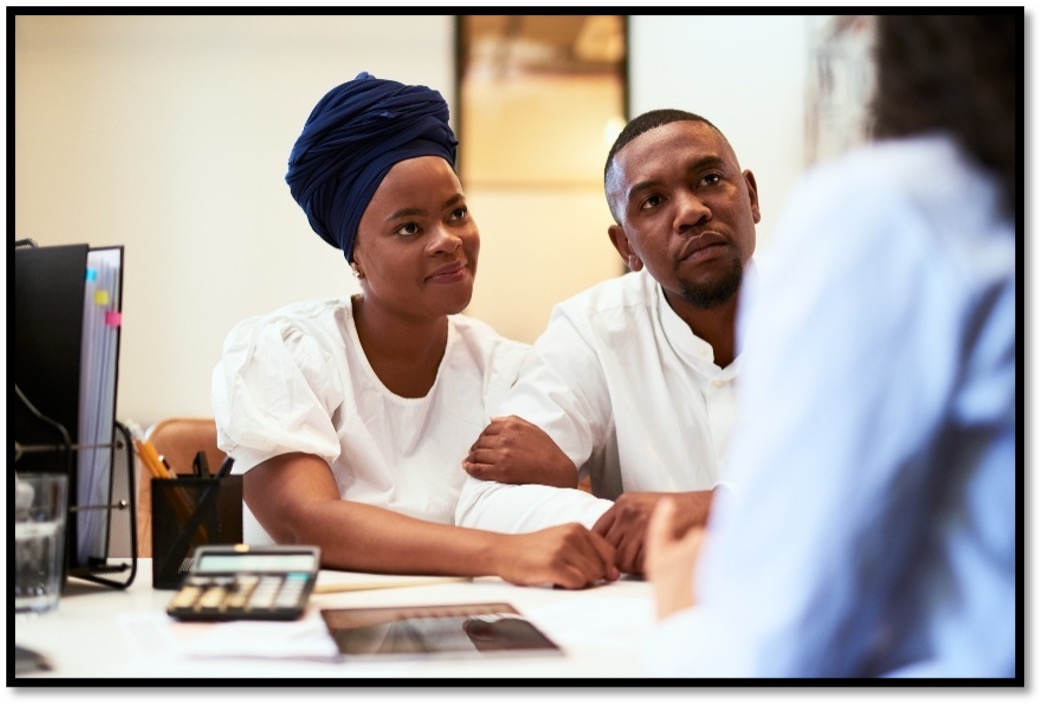What Causes SCD
10 Facts - A Simplified Explanation for a Complex Condition
• Sickle cell disease is best understood by those who have a knowledge of molecular genetics.
• These are simply 10 basic facts that anyone should be aware of when sharing knowledge about sickle cell disease.
• Genes carry the instructions needed to “construct” every part of a new human being.
• Genes are what cause each of us to be born with a certain eye color, hair texture, skin color.
• Every human being has about 20,000 genes.
• Two people are needed to create a baby.
• Their genes combine to create a baby who will have genes from each parent.
• Someone may say “You have hair like your mother and eyes like your father”. That’s because of the “hair genes” and “eye genes” that your parents have passed along to you.
• There are trillions of red blood cells circulating in our bloodstreams.
• They help our bodies use the oxygen that we inhale and exhale every moment of our lives.
• Some red blood cell genes are normal.
• Some red blood cell genes are abnormal.
• These red blood cells are deep red in color.
• They are soft and round.
• They flow through the bloodstream easily.
• They help our bodies to get the oxygen needed to provide us with energy.
• They help us to have normal levels of energy.
• These red blood cells are pale red in color.
• They are stiff and curved like a sickle, a crescent moon, or a curved banana.
• They flow through the bloodstream, getting stuck along the way and causing problems.
• They are not able to help our bodies to get the oxygen needed to provide us with energy.
• They cause a person to often feel very tired.
• Hemoglobin is a vital substance inside our red blood cells.
• It controls their color.
• It controls their shape.
• It controls how well they flow through the bloodstream.
• It controls how well they carry oxygen to the tissues in our bodies.
• It controls how much energy we have to do everyday activities.
• The main ABNORMAL gene related to sickle cell disease is the Sickle Gene (S).
• In order to HAVE sickle cell disease a person must have at least one Sickle Gene (S).
• But there are 5 other abnormal genes that can combine with the Sickle Gene (S).
• Any of these gene combinations can cause a baby to be born with sickle cell disease.
• This means that there are 6 kinds of sickle cell disease.
• Hemoglobin disorders, like sickle cell disease, are called “hemoglobinopathies”.
• People who have a hemoglobinopathy have a health condition that needs special treatment.
• The one NORMAL gene related to sickle cell disease is the Normal Gene (A).
• In order to AVOID HAVING sickle cell disease, a person must have at least one Normal Gene (A).
• The Normal Gene (A) can combine with any of the 6 abnormal genes.
• All of these 6 combinations will cause a baby to be born with a “hemoglobin trait condition”.
• This means that there are 6 kinds of trait conditions.
• Trait conditions are NOT hemoglobin disorders. They are NOT hemoglobinopathies.
• People who have a trait condition are healthy and do not need any special treatment — thanks to the presence of the DOMINANT Normal Gene (A).
• Some families have broken up because they did not understand this.
• A couple may have a new baby who has been screened and found to have sickle cell disease.
• That baby can ONLY have sickle cell disease if BOTH of its parents have the ABNORMAL genes.
• Their ABNORMAL genes have quietly combined to cause that baby’s sickle cell disease.
• We cannot see or feel our genes. So, parents can have these abnormal genes and not know it.
• The best blood test to use is a test called “hemoglobin electrophoresis” (ee-LEK-tro-FOR-EE-sis).
• Done properly, it provides results that are complete and accurate.
• Knowing one’s genetic hemoglobin status helps a person make informed decisions about planning a family.
• A trained genetic counselor can help a couple to answer questions about family planning.
Try to be well-informed. Be aware of these basics:
Misinformation causes harm to people who are born with sickle cell disease.
So, it is important to understand what sickle cell disease IS, medically, and what it IS NOT.
- • Just like eye color or skin color, sickle cell disease is caused by the GENES.
- • Therefore, sickle cell disease is classified as a GENETIC disease.
- • A baby’s sickle cell genes are the genes that they inherit from their TWO birth parents.
- • So, individuals are BORN with sickle cell disease. You CANNOT “catch” it.
- • It is not a “curse.” And it is no one’s “fault.”
- • It is the result of a natural process. But it can cause much pain and suffering.
- • Good medical treatment can help precious individuals lead fulfilling lives.
See the following charts for lists of gene combinations.
- • They DO show combinations that can cause:
- • Sickle Cell Disease – one kind of hemoglobin disease
- • Hemoglobin Trait Conditions
- • They DO NOT show combinations that can cause:
- • Many other kinds of hemoglobin diseases – for example, hemoglobin CC disease (called hemoglobin C disease)
6 Ways a Couple Could Have a Baby
Who Has Sickle Cell DISEASE
| # | If one parent has the ABNORMAL “Sickle Gene”, S. |
and the other parent has one of these ABNORMAL genes, |
they can have one or more babies with these types of sickle cell DISEASE. |
|---|---|---|---|
| 1 | S | S | SS disease |
| 2 | S | C | SC disease |
| 3 | S | D | SD disease |
| 4 | S | E | SE disease |
| 5 | S | Beta Plus (β+) thalassemia | S beta plus (β+) thalassemia |
| 6 | S | Beta Zero (β0) thalassemia | S beta zero (β0) thalassemia |
|
One Parent 
|
The Other Parent 
|
Their Baby 
|
|
|
The baby will have a type of sickle cell DISEASE and WILL need treament. |
|||
Note: because these are all caused by ABNOMAL Hemoglobin genes, they are referred to as:
HbSS, HbSC, HbSD, HbSE, HbSβ+, and HBS HbSβ⁰
6 Ways a Couple Could Have a Baby
Who Has a Hemoglobin TRAIT CONDITION
There are 6 types of hemoglobin TRAIT CONDITIONS
because there are 6 types of ABNORMAL GENES that control the red blood cells.
| # | If one parent has the “NORMAL Gene”, A. |
and the other parent has one of these ABNORMAL genes, |
they can have one or more babies with these types of hemoglobin TRAIT CONDITIONS |
|---|---|---|---|
| 1 | A | S | AS (Sickle Cell Trait) |
| 2 | A | C | AC Trait (C Trait) |
| 3 | A | D | AD trait (D Trait) |
| 4 | A | E | AE trait (E Trait) |
| 5 | A | Beta Plus (β+) thalassemia | Beta plus (β+) thalassemia Trait” |
| 6 | A | Beta Zero (β0) thalassemia | “Beta zero (β0) thalassemia Trait” |
|
One Parent 
|
The Other Parent 
|
Their Baby 
|
|
|
The baby will NOT have any type of sickle cell DISEASE and will NOT need treament. |
|||
A well-trained genetic counselor can help couples to make informed decisions about having a baby.

